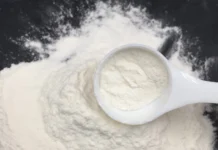BlueWeave Consulting, a leading strategic consulting and market research firm, in its recent study, estimated the size of Global Biodegradable Plastic Market at USD 6.17 billion in 2021. During the forecast period between 2022 and 2028, global biodegradable plastic market size is projected to grow at a double-digit CAGR of 10.4%, reaching a value of USD 12.2 billion by 2028. One of the main trends driving the market growth is governments’ prohibitive measures in the use of single-use plastic products along with rising public awareness of the negative effects of plastic waste. Additionally, it is expected that the growing use of biodegradable plastics in packaging and agriculture will support the growth of biodegradable plastic market. Plastics that do not break down are a global environment problem. To combat this issue, governments across countries are encouraging the use of biodegradable plastics and outlawing single-use plastics. Due to their eco-friendliness, consumers are also willing to pay more for biodegradable plastics. Furthermore, not all biodegradable plastics decompose easily in nature because they require a specific environment in terms of moisture and temperature. Some biodegradable plastics emit greenhouse gases during decomposition, which is harmful to the environment. It may affect the expansion of global biodegradable plastic market.
Growing demand for 100% bioplastics
The biodegradable plastics market across the world is growing at a rapid pace. However, there is a need for 100% bioplastics that are compostable, recyclable, and biodegradable while also helping to reduce humankind’s carbon footprint in comparison to incumbent plastics. As a result, businesses are investing in R&D to reduce their reliance on crude oil and reduce the amount of waste in landfills and oceans. Growing consumer demand for greener and safer products is driving advancements in bioplastics made from polyhydroxyalkanoates (PHAs), which are being touted for their intriguing biodegradability and physical properties comparable to polypropylene (PP). This results in offering lucrative opportunities for global biodegradable plastic market during the forecast period.
Request for Sample Report @ https://www.blueweaveconsulting.com/report/biodegradable-plastic-market/report-sample
Recyclable bioplastics into new value-added materials to support biobased economy
In addition to product innovations, bioplastics are being recycled using reliable mechanical and chemical processes. Depolymerization, pyrolysis, and other processes are used in these techniques to disassemble plastics and recover the raw materials used in their synthesis. Chemical recycling techniques offer a potentially waste-free method of converting used bioplastics into fossil fuel or renewable chemicals for use in new products. To establish a developing circular economy, businesses in the biodegradable plastics market should raise awareness about the recycling of bioplastics through social media and conventional marketing channels. In the biobased economy, which entails recycling waste from bioplastics and fossil fuel plastics into new products.
Challenge: Problem with performance
Some of the key performance issues with biodegradable plastics are low heat resistance and low barrier properties to water, air, and oxygen. This hampered penetration in several industries, including automotive and electronics. Furthermore, poor mechanical properties, such as low tensile, impact strength, and process capabilities, are anticipated to affect biodegradable plastics’ penetration in a variety of applications. Such limitations of biodegradable plastics pose a significant challenge to the growth global biodegradable plastic market.
Segmental Coverage
Global Biodegradable Plastic Market – By Application
Based on application, global biodegradable plastic market is segmented into Packaging, Agriculture, Consumer Goods, and Others. Among these, the packaging segment holds the highest market share. Due to changing consumer lifestyles and rising environmental concerns, the packaging industry is seeing an increase in the demand for biodegradable plastics. Plastics are increasingly being used in packaging due to their high water resistance and durability. Food packaging, healthcare packaging, cosmetic & personal care packaging, and shopping bags are just a few of the packaging applications for biodegradable plastics. Additionally, it is projected that the agriculture sector would hold the highest market share during the forecast period. Biodegradable mulch film is used to ensure soil water conservation, weed control, and the maintenance of a favorable soil temperature to hasten crop development. Utilizing biodegradable plastics in consumer goods is a growing trend in developed economies. These elements all contribute to the projected growth of the global biodegradable plastic market.
Impact of COVID-19 on Global Biodegradable PlasticMarket
Biodegradable plastics are used in a wide range of industries, including consumer goods, packaging, textiles, agriculture, and horticulture. However, Covid-19 affected these sectors globally. The industry’s growth had been hampered from 2019 to 2020 by logistical issues, labor shortage, lack of materials, and other problems. Additionally, the global impact has resulted in a sharp decline in packaging demand, which is criticized as being unnecessary. While the demand for e-commerce deliveries that qualify for the essential packaging category significantly increased. These changes have resulted in a new set of difficulties for packaging converters. This, in turn, would also contribute to the unevenness of the Covid-19 pandemic’s effects on the packaging sector. COVID-19 pandemic affected the expansion of global biodegradable plastic market.
Competitive Landscape
Leading market players in global biodegradable plastic market include Cargill Incorporated, Corteva, PTT MCC Biochem Co., Ltd., Hansen, Biome Technologies plc, Plantic Technologies Limited, BASF SE, Total Corbion PLA, Synbra Technology BV, Bayer Crop Science, Futerro, Novamont SpA, Cheminova, NatureWorks LLC, Eastman Chemical Company, Trineso, Danimer Scientific, and FKuR Kunststoff GmbH. Global biodegradable plastic market is highly fragmented with the presence of several manufacturing companies. The market leaders retain their supremacy by spending on research and development, incorporating innovative technology into their goods, and releasing upgraded items for customers. They employ various strategies, including alliances, agreements, mergers, and partnerships.
Contact Us:
BlueWeave Research Blog
Phone No: +1 866 658 6826
Email: info@blueweaveconsulting.com













